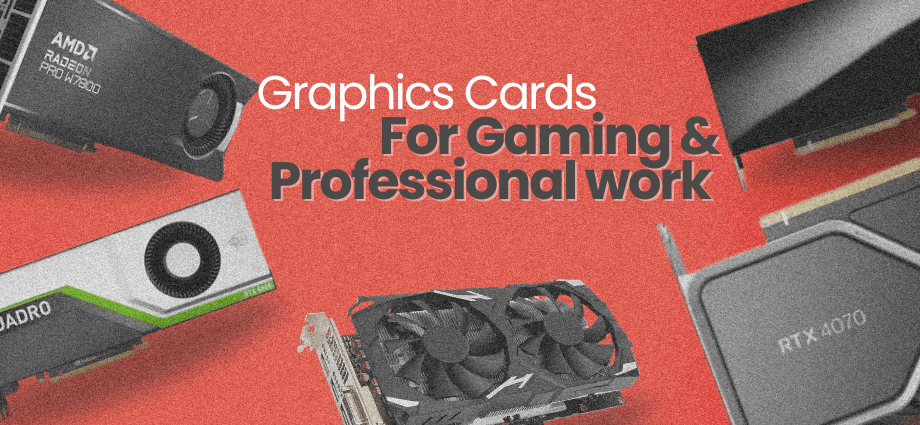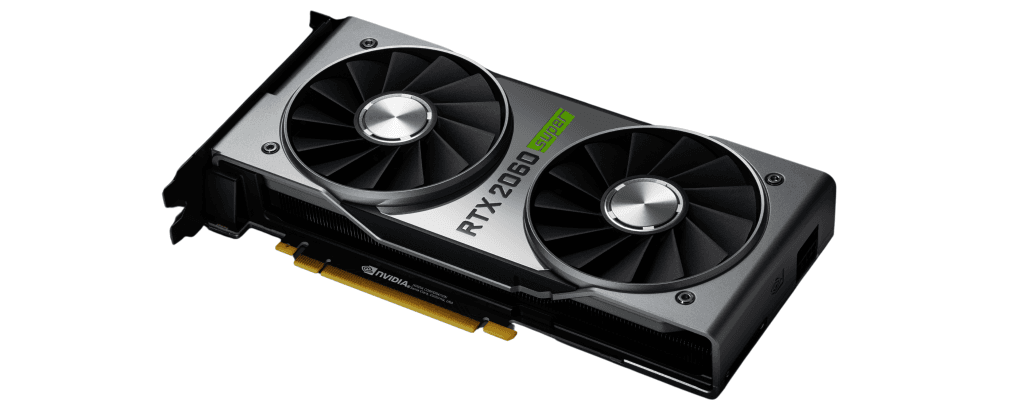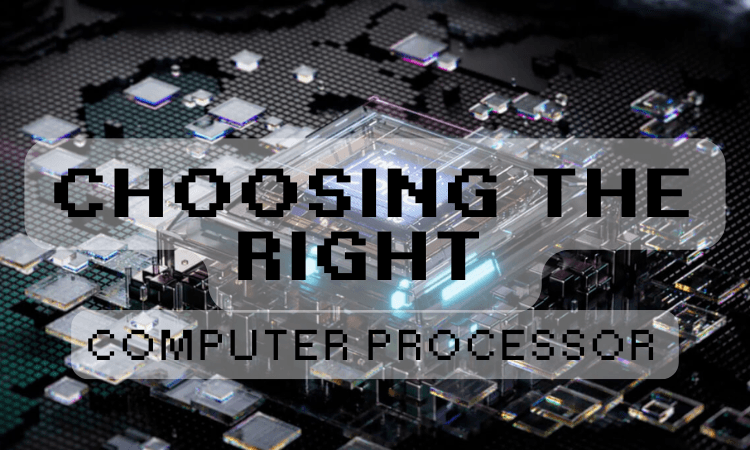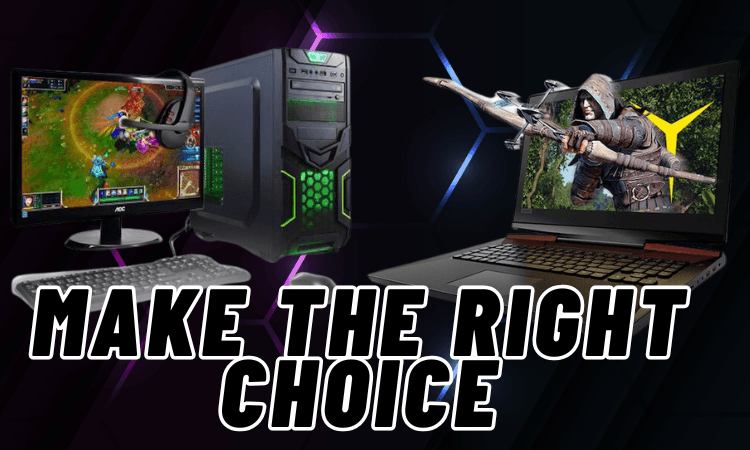Graphics cards, also known as GPUs (Graphics Processing Units), are one of the most essential components in modern computing. Whether you are into gaming, video editing, or any task that requires high visual performance, a good graphics card is critical to ensure smooth and vibrant visuals. The right GPU can significantly impact your overall experience, whether it’s playing the latest AAA games or working on creative projects like video editing. This article explores everything you need to know about graphics cards, how they work, and how to choose the right one for your needs.
What is a Graphics Card?
A graphics card is a dedicated hardware component designed to render images, videos, and animations for display on your computer monitor. It processes data from your computer’s CPU and converts it into a visual output that you can see. Unlike the CPU, which handles general computing tasks, the GPU is specialized in graphical calculations, enabling it to perform tasks that require intensive graphical processing, such as 3D rendering, gaming, and video editing.
The graphics card houses several important components. At its core is the GPU, which performs the graphical computations. It also has VRAM (Video RAM), which stores image data temporarily for fast access during processing. Cooling mechanisms are also part of most modern graphics cards, as high-performance GPUs can generate a lot of heat. Proper cooling ensures that the GPU operates efficiently and remains functional for long periods, even under heavy workloads.
Integrated vs. Dedicated Graphics
When it comes to graphics cards, there are two primary categories: integrated graphics and dedicated graphics.
- Integrated Graphics: These are built directly into the CPU. Integrated graphics are typically found in budget or entry-level systems. They share system memory (RAM) with the CPU, so they don’t have their own dedicated memory. While integrated graphics are suitable for basic computing tasks, they struggle with resource-intensive tasks like gaming, video editing, or 3D rendering.
- Dedicated Graphics: A dedicated GPU has its own memory (VRAM) and processing power, making it far superior for tasks such as gaming, content creation, or running demanding applications. These GPUs are designed to handle complex visual tasks, rendering 3D environments, and processing high-resolution video smoothly. Dedicated GPUs are typically used in gaming PCs, workstations, and high-performance laptops.
How Graphics Cards Work
Graphics cards perform several tasks that are crucial for rendering visuals. Here’s a breakdown of how they work:
When you run a game, video, or any graphics-intensive application, the CPU sends instructions to the GPU on how to process the graphics. The GPU then takes this data, applies various calculations (like shading, texture mapping, and 3D rendering), and produces an image or animation. This image is then sent to the monitor for display.
The VRAM is used to store textures, images, and other visual elements temporarily. VRAM is faster than system RAM, making it ideal for handling the large amounts of data involved in graphical processing. The cooling system ensures that the GPU doesn’t overheat during intense graphical tasks, while the power supply provides the necessary power to run the GPU, especially in high-performance scenarios.
For modern graphics cards, particularly those used for gaming and content creation, GPUs also handle ray tracing, a technique that simulates realistic lighting and shadows, and DLSS (Deep Learning Super Sampling), which boosts frame rates by generating images at a lower resolution and then upscaling them.
Types of Graphics Cards
When selecting a graphics card, it’s important to choose one based on your specific needs. Whether you’re gaming, doing professional work like 3D rendering, or just using a computer for basic tasks, different GPUs are designed for different purposes.

Gaming Graphics Cards
If gaming is your main concern, you will need a high-performance GPU that can handle demanding graphics and provide smooth frame rates. Gaming GPUs are equipped with cutting-edge technologies, such as real-time ray tracing and AI-powered graphics processing, to deliver the best possible gaming experience. Some popular gaming GPUs include:
- NVIDIA GeForce RTX 3080: This GPU is known for its exceptional performance and advanced features like ray tracing and AI-enhanced graphics. It’s perfect for 4K gaming and high-quality rendering.
- AMD Radeon RX 6800 XT: A powerful alternative to NVIDIA’s high-end GPUs, the RX 6800 XT offers great performance in both 1440p and 4K gaming, delivering smooth and high-quality graphics.
- NVIDIA GeForce RTX 3090: The RTX 3090 is the flagship gaming GPU, offering unparalleled performance with its massive amount of VRAM (24GB) and exceptional processing power.
Professional Graphics Cards
For tasks that require precision and stability, such as video editing, 3D modeling, CAD, and other professional creative applications, you’ll need a professional-grade GPU. These cards are optimized for workflows that demand accuracy and high performance, though they may not be as focused on gaming features. Examples of professional-grade GPUs include:
- NVIDIA Quadro RTX 5000: This card is perfect for professionals working on complex 3D models, video rendering, and scientific simulations. It features specialized drivers for CAD, video editing, and content creation.
- AMD Radeon Pro WX 8200: This GPU is ideal for professionals in the creative industries. It offers excellent performance for 3D rendering, video production, and CAD applications.
Budget Graphics Cards
For those who don’t need high-end graphics performance, budget-friendly graphics cards are a great option. These cards are more affordable and can handle basic tasks like media playback, light gaming, and office applications. Some affordable choices include:
- NVIDIA GeForce GTX 1650: A budget-friendly card that can handle 1080p gaming and casual content creation without breaking the bank.
- AMD Radeon RX 550: This low-cost option is perfect for non-gaming tasks, such as office work, media consumption, and light casual gaming.
How to Choose the Right Graphics Card
Selecting the right graphics card depends on what you need it for and how much you’re willing to spend. Here are a few tips to guide your decision:
- For gaming: If you’re a gamer looking for top-tier performance, you’ll need a high-end card like the NVIDIA GeForce RTX 3080 or AMD Radeon RX 6800 XT.
- For professional work: If you’re a content creator, video editor, or CAD professional, opt for a professional-grade card like the NVIDIA Quadro RTX 5000.
- For everyday use: If you only need the card for browsing, streaming, and light tasks, an affordable GPU like the GTX 1650 will be sufficient.
Other factors to consider when selecting a graphics card include VRAM size, clock speed, and power requirements. More VRAM is necessary for higher resolutions and more detailed textures, while a higher clock speed typically results in better performance. Make sure to check whether your system has the necessary power supply and physical space to accommodate the graphics card.
Popular Graphics Card Brands
There are a few key players in the graphics card market, and understanding their offerings can help you make an informed decision.
NVIDIA

NVIDIA is the leading brand in the graphics card market, known for its GeForce, Quadro, and Tesla series. Their cards, particularly the GeForce RTX series, are renowned for their high-performance capabilities and advanced features like ray tracing and DLSS.
AMD
AMD is a strong competitor to NVIDIA, offering great performance at competitive prices. The Radeon RX series has gained popularity for gaming, while the Radeon Pro series serves professionals in the creative industry. AMD is also known for offering better value for money in some segments.
Other Brands
- MSI: Known for producing high-quality graphics cards with superior cooling solutions, MSI’s products are favored by gamers and content creators alike.
- EVGA: This brand offers premium models with excellent overclocking features, ensuring that users get the best possible performance.
- ASUS: ASUS graphics cards are well-regarded for their build quality, performance, and eye-catching designs.
Common Issues and Troubleshooting
Like any hardware, graphics cards can sometimes experience issues. Some common problems include poor performance, artifacting, overheating, or crashes. Here’s how to troubleshoot:
- Driver Issues: Outdated or corrupted drivers can cause performance issues. Always ensure you have the latest drivers installed from the GPU manufacturer’s website.
- Overheating: Graphics cards can overheat under heavy loads. If your card is overheating, ensure the case has adequate airflow, and clean the fans regularly. You may also consider adding additional cooling solutions.
- Connection Problems: If your monitor is not displaying properly, check your cable connections and make sure your GPU is seated properly in the PCIe slot.
Conclusion
Graphics cards are an essential part of any computing system, especially if you require high-quality visuals for gaming, video editing, or professional work. By understanding the types of cards available and their features, you can make an informed decision based on your needs. Whether you’re a gamer looking for powerful graphics, a professional working in 3D modeling or video editing, or a casual user seeking a budget option, there’s a graphics card for everyone.




